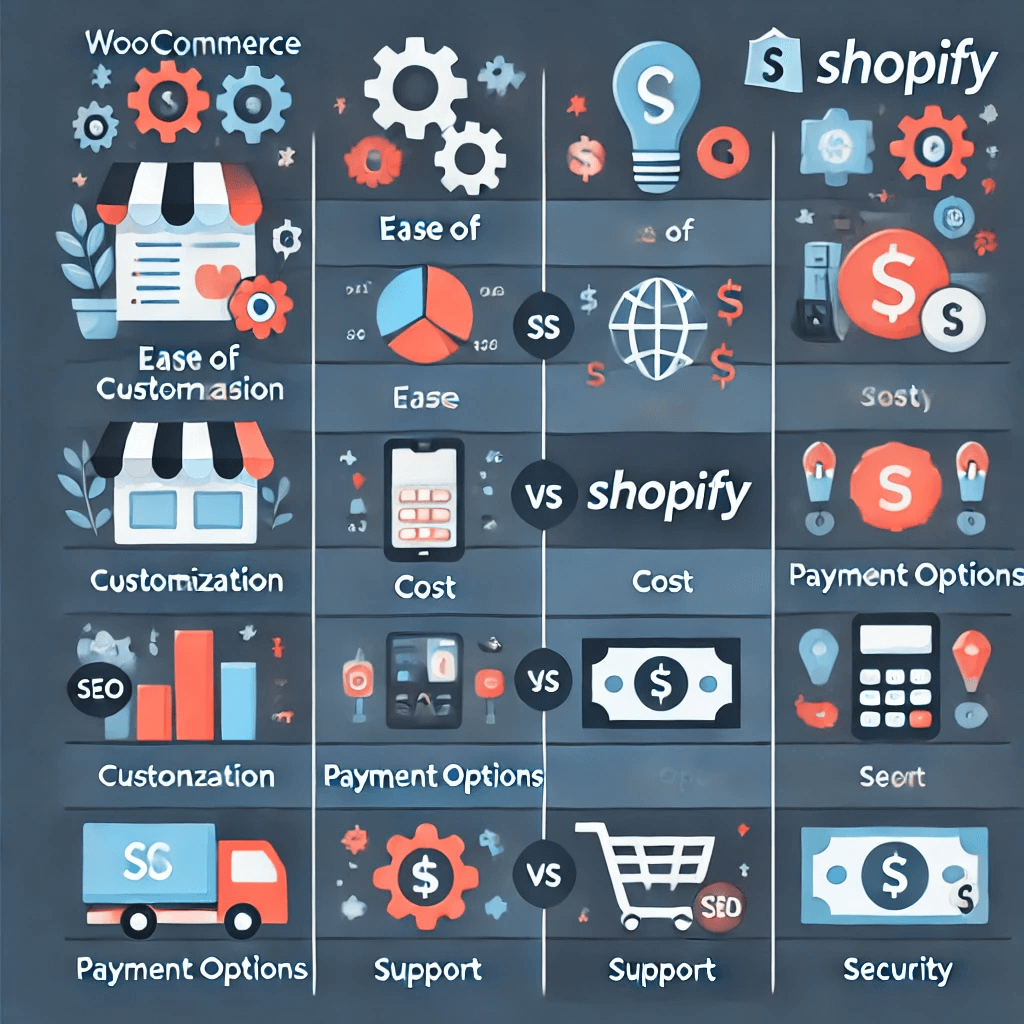Selecting the right e-commerce platform is a critical decision for any online business. WooCommerce vs Shopify are two of the most popular platforms available, each offering unique features and advantages. This article provides an in-depth comparison to help you determine which platform is the best fit for your online store.
User Experience and Setup
WooCommerce: As a WordPress plugin, WooCommerce integrates seamlessly with WordPress, offering a familiar interface for those already using the platform. However, setting up a WooCommerce store requires some technical skills, including choosing a hosting provider and configuring the plugin. This can be a barrier for beginners, but it also allows for significant customization and control.
Shopify: Shopify is designed with simplicity in mind, offering a straightforward setup process. As a fully hosted solution, Shopify handles all technical aspects, including hosting and security, allowing you to focus on building and managing your store. This makes it an attractive option for those seeking a hassle-free setup experience.
Customization and Design
WooCommerce: WooCommerce offers extensive customization options, allowing you to tailor every aspect of your store’s design and functionality. With access to a wide range of themes and plugins, you can create a unique shopping experience that aligns with your brand. However, this level of customization often requires coding skills or the assistance of a developer.
Shopify: Shopify provides a variety of professionally designed themes that are easy to customize using its intuitive drag-and-drop editor. While the customization options are not as extensive as WooCommerce, Shopify’s themes are visually appealing and user-friendly. This makes it easy to create a polished and professional online store without needing advanced technical skills.
Cost Considerations
WooCommerce: WooCommerce itself is free, but there are various costs associated with running a WooCommerce store. These include hosting, domain registration, and any additional plugins or themes you might need. The overall cost can vary significantly depending on your specific needs and the level of customization you require.
Shopify: Shopify offers several pricing plans, each with a fixed monthly fee. While this provides a predictable cost structure, additional expenses can arise from using premium themes and apps. It’s important to consider these potential extra costs when choosing a Shopify plan, as they can impact your overall budget.
Payment Options and Fees
WooCommerce: WooCommerce supports a wide range of payment gateways, providing flexibility in how you accept payments. You can integrate options like PayPal, Stripe, and others through plugins, allowing you to choose the best payment methods for your business.
Shopify: Shopify also offers multiple payment gateways, with Shopify Payments being the default option. Using Shopify Payments can save you from transaction fees, but if you opt for an external gateway, additional transaction fees may apply. This is an important consideration when evaluating overall costs.
Performance and Scalability
WooCommerce: The performance and scalability of a WooCommerce store depend largely on your hosting provider and how well you optimize your site. As your store grows, you may need to upgrade your hosting plan or invest in performance optimization measures to maintain a smooth shopping experience.
Shopify: Shopify is designed to scale seamlessly with your business. It manages server resources and ensures that your store can handle increased traffic and transactions without compromising performance. This makes it a suitable choice for businesses planning significant growth or seasonal spikes in traffic.
Support and Resources
WooCommerce: Support for WooCommerce is primarily community-driven. There are numerous forums, documentation, and tutorials available, but for more complex issues, you might need to hire a developer. This can result in higher support costs, especially if you require ongoing assistance.
Shopify: Shopify offers comprehensive customer support, available 24/7 through live chat, email, and phone. This level of support can be crucial for resolving issues quickly and efficiently, particularly for those who prefer immediate assistance and reliable help.
SEO and Marketing
WooCommerce: WooCommerce benefits from WordPress’s robust SEO capabilities, allowing you to optimize your store for search engines effectively. With access to various SEO plugins, you can improve your site’s visibility and drive organic traffic to your store.
Shopify: Shopify also provides effective SEO tools, though with some limitations compared to WooCommerce. You can optimize your site for search engines, but certain advanced SEO adjustments might be less accessible. Nonetheless, Shopify’s built-in marketing tools are user-friendly and can help you reach a broader audience.
Security and Maintenance
WooCommerce: With WooCommerce, you are responsible for managing security and maintenance. This includes implementing security measures, managing SSL certificates, and keeping your site updated. While this offers control, it also requires a proactive approach to ensure your store’s security and performance.
Shopify: Shopify handles all security and maintenance aspects, including SSL certificates and PCI compliance. This removes the burden of security management, allowing you to focus on other aspects of your business. Shopify’s managed solution provides peace of mind, especially for those less experienced in handling security issues.
Conclusion
Choosing between WooCommerce and Shopify ultimately depends on your specific business needs, technical skills, and long-term goals. WooCommerce offers unparalleled flexibility and customization, making it ideal for those comfortable with technical aspects or with access to a developer. Shopify, on the other hand, provides a user-friendly, fully managed solution, perfect for those seeking simplicity and ease of use. By carefully considering your requirements, budget, and desired level of control, you can select the platform that best aligns with your business objectives.







Comments
0 comments